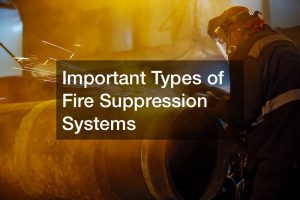
A fire suppression system is a complex combination of dry and wet agents that aid in the prevention and extinguishment of fires on objects or property. Fire suppression systems are normally used everywhere, from commercial establishments to homes and businesses. When the control panel receives a signal, the suppression system will automatically be activated to discharge the extinguishing material. The suppression system is essential because it can protect your valuable items and the lives of people around you, including yours.
A water-based suppression is also known as a sprinkler system. This is the basic requirement for firefighting in many buildings and businesses. Water is not inherently dangerous to humans. However, it is not the most effective type of suppression system. In some cases, water can become more dangerous than other extinguishing agents in certain types of fires. It can also cause extensive property damage, necessitating major cleanup.

On the other hand, gaseous clean agent fire control systems are classified into three types of fire suppression systems. Some examples include Inert gas, carbon dioxide, and chemical clean agent systems. Each type has distinct properties that may lend themselves well to various fire types. Understanding the various types of suppression systems can assist you in selecting the best system for safeguarding your property from a potential fire.



